Israeli Ruscus (Ruscus Hypophyllum) Profile
Written by Iris
Oct 14 2021
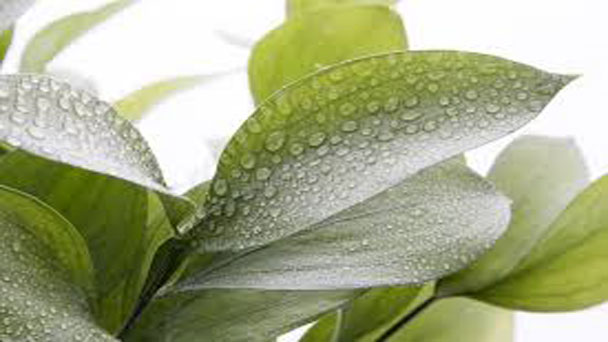
Israeli Ruscus (Ruscus hypophyllum) has dark green leaves, fine texture, hard dry stems and long bottle life. Its striking bright green appearance and linear shape add focus to any bouquet and arrangement. Israeli Ruscus (Ruscus hypophyllum) is very durable and can be dried or used fresh.
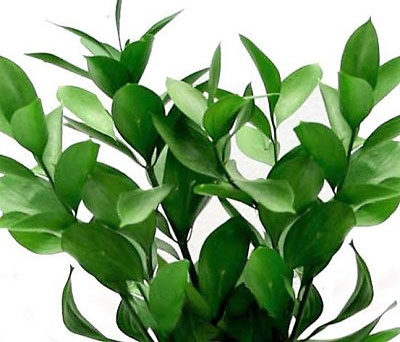
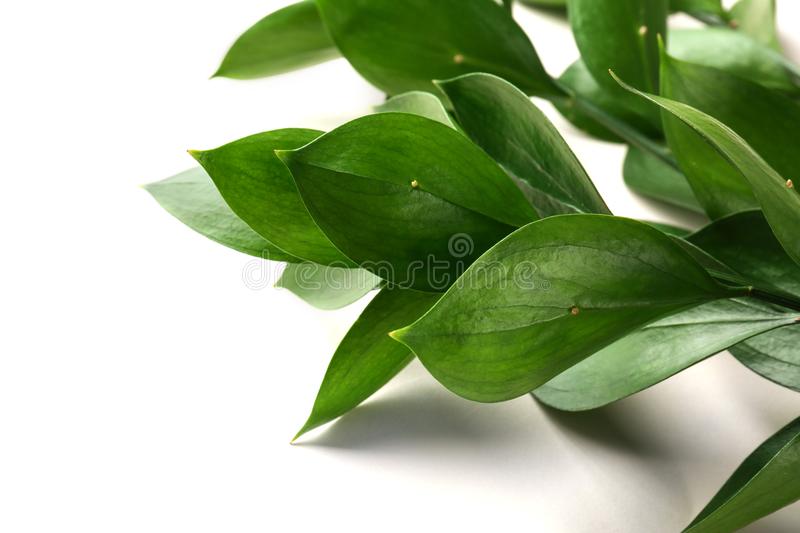
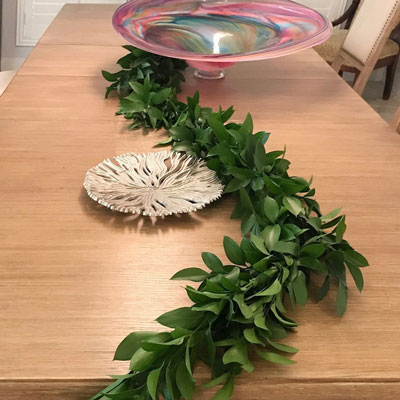
Israeli Ruscus (Ruscus hypophyllum) is an easy-to-care houseplant as it can tolerate and survive a wide range of growing conditions. When it comes to humidity, it can do well in high, medium, or low humidity. The ideal humidity level is 40-50%. This is where its foliage appears the greenest, fullest, and freshest.
If the humidity level in your home is around 10-30%, you can regulate it by installing a humidifier in your room. Also, if you place this plant over a pebble tray, the moisture level around it will increase, increasing the humidity. Grouping this plant with other houseplants also increases the humidity level.
It is important to renew the soil each time you repot your plants for nutrient supply. Due to the fact that Israeli Ruscus absorbed all minerals and nutrients from the soil within a year, fresh supplies will be required in the coming months.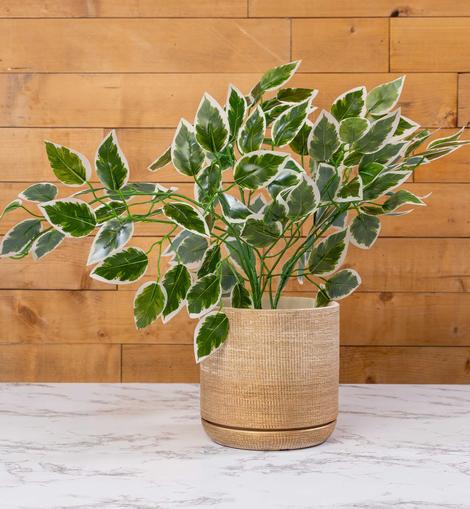
harvested in mid-December and stored at 40°F [4°C] have been successfully used in arrangements as long as five months later. Israeli ruscus foliage is available year-round.
tolerate competition from tree roots and drought, and experience in Florida indicates that Israeli Ruscus is similarly tolerant.
‘Wheeler’s Variety’ is a small, spiny, more erect shrub. Unlike most Ruscus varieties, this slow-growing plant is a hermaphrodite plant that requires no pollination partner in order to produce large, red berries.
‘Elizabeth Lawrence’ is another hermaphroditic plant. This compact variety displays thick, upright stems and masses of bright red berries.
‘Christmas Berry’ puts on a dazzling display of bright red berries throughout the winter months. This variety is beautiful but very slow-growing.
‘Lanceolatus’ is an attractive variety that produces long, narrow “leaves”.
Bacterial Blight: If you notice any reddish-brown, water-soaked spots on the foliage of this plant, know that this plant has caught bacterial leaf spots or blight. In such a case, try to keep the foliage as dry as possible. Do not mist the plant at all.
Fungal Leaf Spot: Irregular necrotic, fluid-filled spots indicate the plant has been affected by fungal leaf spot. This disease must be avoided by avoiding overwatering and wet foliage.
If your plant gets infected by any such diseases, remove the affected parts before the infection spreads to the healthy parts.
Pests
Scales and aphids are two common pests of this plant. If you mist the plant occasionally and keep the foliage wet, your plant becomes more susceptible to such pests. You can get rid of these by rubbing neem oil or bactericidal soap on its foliage.
Israeli Ruscus PictureIsraeli Ruscus InfoIsraeli Ruscus Foliage & StemIsraeli Ruscus FlowersIsraeli Ruscus FruitEvergreenIsraeli Ruscus DistributionHow to Grow Israeli RuscusHow to Care for Israeli RuscusIsraeli Ruscus LightingIsraeli Ruscus Soil CareIsraeli Ruscus Temperature & Humidity CareIsraeli Ruscus Fertilizer CareIsraeli Ruscus Pruning CareRepotting Israeli RuscusIsraeli Ruscus UsesFloral Design UseLandscape UseInteriorscape UseIsraeli Ruscus VarietiesIsraeli Ruscus Common Pests/DiseasesIsraeli Ruscus Design Tips
Israeli Ruscus Picture

Israeli Ruscus Info
| Scientific Name | Ruscus Hypophyllum |
| Common Name | Israeli Ruscus, Florida Ruscus |
| Family | Asparagaceae |
| Subfamily | Nolinoideae |
| Genus | Ruscus |
| Size | 50-100cm, 20-40 inches (1.5-3 feet) |
| Bloom season | Spring / Summer |
Israeli Ruscus Foliage & Stem
The foliage cuttings of israeli ruscus plant are popular due to its glossy-green ovate leaves that grow on erect branches. In reality, these leaves are stem modifications, known as cladodes.Israeli Ruscus Flowers
Florida Ruscus blooms in summer and produces star-shaped white-colored flowers that grow in the center of cladodes. These flowers have violet to purple centers.Israeli Ruscus Fruit
This plant produces bright red berries as a fruit from summers to early autumn that are 5-10 millimeters in diameter. This only happens if you have a dioecious species or two monoecious species. These fruits are not edible.Evergreen
Israeli ruscus plant is an evergreen species. Its foliage remains functional throughout the year. This plant does not lose or sheds all leaves during autumn. Instead, it sheds leaves randomly once they are old enough.Israeli Ruscus Distribution
Israeli Ruscus is native to Northwest Africa, Sicily, and the Southern regions of France and Spain. israeli ruscus is part of the Asparagaceae Family, which is home to several other popular cut foliage plants.
How to Grow Israeli Ruscus
The florida ruscus or butcher's broom is a beautiful houseplant whose stems are also used for decorative purposes, wreaths and bouquets. That's why its spread is always a good option. If you know the basics of how to disseminate it, you can make your own family collection of this plant. This plant is propagated by fission. The best time to spread it is when you repot it. If you don't know the method, we are here to help you. Here's how the Israeli Ruscus propagate.- Remove plants from pots.
- Shake off excess soil.
- Remove any damaged roots.
- Untie the roots with your fingers.
- Separate about a third of the plant, which has some healthy roots attached to it.
- Place both parts in a bowl with fresh potting mixture.
- Water the plants and place them in a well-lit area.

How to Care for Israeli Ruscus
Israeli Ruscus Lighting
The Israeli Ruscus (Ruscus hypophyllum) did best in the shade. Heavy shade produces fewer but longer stems and larger branches than low shade. 10% more stems were produced under 50% shade than under 70% shade, but there was no difference in the average weight of stems produced under the two shade levels.Israeli Ruscus Soil Care
The Israeli Ruscus thrives in moist, fertile soils, but can tolerate a variety of soils and soilless culture media. In an experiment conducted under shady conditions, POTS containing a Mixture of Florida sedge peat: construction sand (3:1, v: v) produced 12% more yield (on a fresh weight basis) than POTS containing a mixture of commercial soillless containers. The difference in yield may be due to the better water retention of the peat: sand mixture, which could be eliminated if the plants in the commercial mixture were watered more frequently.Israeli Ruscus Temperature & Humidity Care
Israeli Ruscus should be grown at an average room temperature ranging from 21°C to 30°C. In spring and autumn, the normal room temperature stays in this range. But in mid-winters and mid-summers, it exceeds or decreases towards temperature extremes. This is when you will have to place its pot in a spot where the temperature stays warm for its optimum growth. But that does not mean this plant is not tolerant of frosts or extreme heat. It has high resistance to frosts and tropical summers. Although, its growth rate and health may be affected to some extent during these days.Israeli Ruscus (Ruscus hypophyllum) is an easy-to-care houseplant as it can tolerate and survive a wide range of growing conditions. When it comes to humidity, it can do well in high, medium, or low humidity. The ideal humidity level is 40-50%. This is where its foliage appears the greenest, fullest, and freshest.
If the humidity level in your home is around 10-30%, you can regulate it by installing a humidifier in your room. Also, if you place this plant over a pebble tray, the moisture level around it will increase, increasing the humidity. Grouping this plant with other houseplants also increases the humidity level.
Israeli Ruscus Fertilizer Care
Israeli Ruscus (Ruscus hypophyllum) should be fertilized every two months, from March to September. There is no need to fertilize the Israeli Ruscus in the fall or winter. You should use a regular houseplant fertilizer for Israeli Ruscus that has balanced amounts of all macro and micronutrients, nitrogen, potassium, and phosphorus. Do not add fertilizer directly from the bag to the soil; It should be diluted to half its strength first. You should dilute it by adding two tablespoons of fertilizer to a gallon of water.Israeli Ruscus Pruning Care
When it comes to the attractive look of Israeli Ruscus, there's actually no pruning required. Israeli Ruscus looks nice, with fuller leaves. However, you still need to remove old and dead leaves from time to time to save Israeli Ruscus from the burden of preserving the dead leaves. You should prune the Israeli Ruscus immediately after the start of the growing season. Ok, sharp garden scissors are great for trimming old branches and yellow leaves. Disinfecting plants before using scissors is an important step that can never be avoided.Repotting Israeli Ruscus
Once the Israeli Ruscus is twice as tall, move it to a new pot. This should happen during the months of active growth each year. All you have to do is use a new pot 1-2 inches larger than before, fill it with fresh potting mixture and move the Florida mushrooms into it.It is important to renew the soil each time you repot your plants for nutrient supply. Due to the fact that Israeli Ruscus absorbed all minerals and nutrients from the soil within a year, fresh supplies will be required in the coming months.

Israeli Ruscus Uses
Floral Design Use
Israeli Ruscus (Ruscus hypophyllum) stems make good line (linear) materials in floral arrangements. In addition, R.hypophyllum can be used as a filler element and as a Christmas green, especially if its red berries are present. Israeli Ruscus can be used dried or fresh and is extremely durable—for example, stemsharvested in mid-December and stored at 40°F [4°C] have been successfully used in arrangements as long as five months later. Israeli ruscus foliage is available year-round.
Landscape Use
Israeli Ruscus (Ruscus hypophyllum) can be used as a ground cover in the landscape, especially in shaded locations. Other species of ruscus (R. aculeatus, R. hypoglossum) cantolerate competition from tree roots and drought, and experience in Florida indicates that Israeli Ruscus is similarly tolerant.
Interiorscape Use
Israeli Ruscus (Ruscus hypophyllum) has potential for use as an indoor ground cover, but research is needed to determine optimum interior light and fertilizer levels for this crop.Israeli Ruscus Varieties
‘John Redmond’ is a compact plant, valued for its carpet-like growth habit and glossy red berries.‘Wheeler’s Variety’ is a small, spiny, more erect shrub. Unlike most Ruscus varieties, this slow-growing plant is a hermaphrodite plant that requires no pollination partner in order to produce large, red berries.
‘Elizabeth Lawrence’ is another hermaphroditic plant. This compact variety displays thick, upright stems and masses of bright red berries.
‘Christmas Berry’ puts on a dazzling display of bright red berries throughout the winter months. This variety is beautiful but very slow-growing.
‘Lanceolatus’ is an attractive variety that produces long, narrow “leaves”.
Israeli Ruscus Common Pests/Diseases
Bacterial blight and fungal leaf spot are two common diseases of Ruscus hypophyllum.Bacterial Blight: If you notice any reddish-brown, water-soaked spots on the foliage of this plant, know that this plant has caught bacterial leaf spots or blight. In such a case, try to keep the foliage as dry as possible. Do not mist the plant at all.
Fungal Leaf Spot: Irregular necrotic, fluid-filled spots indicate the plant has been affected by fungal leaf spot. This disease must be avoided by avoiding overwatering and wet foliage.
If your plant gets infected by any such diseases, remove the affected parts before the infection spreads to the healthy parts.
Pests
Scales and aphids are two common pests of this plant. If you mist the plant occasionally and keep the foliage wet, your plant becomes more susceptible to such pests. You can get rid of these by rubbing neem oil or bactericidal soap on its foliage.
Israeli Ruscus Design Tips
Normally, Israeli Ruscus is grown in abundance for commercial purposes, but can also be grown as a houseplant because it has a lesser number of care requirements. It is a low-maintenance, easy-to-care plant that does not fuss about anything when grown inside a home.Latest Updated
- Benefits of Bugleweed - 7 Science-backed Health Benefits
- Bugleweed Dangers & Side Effects - Is It Poisonous?
- How to Plant Evergreen Trees - What You Should Know
- When to Plant Evergreens - Grow Guide for Evergreen Trees
- 12 Wonderful Evergreen Shrubs for Your Garden
- 12 Popular Evergreen Plants with Pictures for Beginners
- When And How To Prune A Lilac Bush Like a Pro
- How to Grow & Care for Lilac Vine (Hardenbergia Violacea)
- Japanese Lilac Tree (Syringa Reticulata) Care & Propagation Guide
- Shumard Oak Pros and Cons - What to Know
Popular Articles
- Winter maintenance of Antirrhinum Majus
- How to Grow Terminalia Mantaly Tree
- How to Grow and Care for Crossostephium Chinense
- How to grow Antirrhinum Majus in spring
- Peristeria Elata (Dove Orchid) Profile: Info & Care Guide
- Underwatered Snake Plant (Sansevieria Trifasciata) - Signs And How To Fix
- How to Care for Brazilian Jasmine Plant (Mandevilla Sanderi)
- How to Grow & Care for Graptopetalum Purple Delight in Summer
- Rosa Chinensis (China Rose): Plant Growing & Care Tips
- How to Care for Baby Sun Rose (Aptenia Cordifolia)